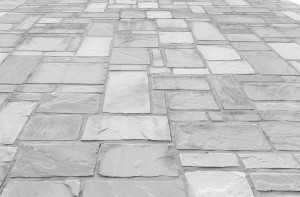Cementitious Grouts: For Strong and Durable Tiled Walls
Cementitious grouts play a vital role in ensuring the strength, stability, and aesthetic appeal of tiled walls. Grout is the material that fills the gaps between tiles, providing a cohesive and finished look to the tiled surface. Among various types of grouts, cementitious grouts, made from a mixture of cement, sand, and additives, are widely used for their durability and versatility. This comprehensive guide explores the characteristics, applications, and best practices associated with cementitious grouts, emphasizing their importance in achieving strong and durable tiled walls.

1. Introduction to Cementitious Grouts:
Cementitious grouts are a type of mortar commonly used to fill the joints between tiles. The basic composition includes Portland cement, fine aggregates (such as sand), and additives. The mixture is typically combined with water to form a paste that is applied to the tile joints.
2. Key Characteristics of Cementitious Grouts:
- Durability: Cementitious grouts are known for their durability, providing a robust and long-lasting solution for tiled surfaces.
- Strength: The presence of cement contributes to the strength of the grout, ensuring it can withstand the loads and stresses experienced by tiled walls.
- Versatility: Cementitious grouts are suitable for a wide range of tile types, including ceramic, porcelain, and natural stone.
- Color Options: Available in a variety of colors, allowing for customization and coordination with the chosen tiles.
- Affordability: Cementitious grouts are generally cost-effective, making them a preferred choice for many construction projects.
3. Applications of Cementitious Grouts:
Cementitious grouts find extensive applications in different settings:
- Residential Construction: Used in kitchens, bathrooms, and other areas where tiled walls are common.
- Commercial Spaces: Applied in offices, restaurants, and hotels to achieve both aesthetic appeal and durability.
- Outdoor Areas: Suitable for use in exterior tiled walls, providing weather resistance and stability.
- Industrial Environments: Used in industrial settings where the tiled walls may be subjected to heavy loads and chemical exposure.
4. Types of Cementitious Grouts:
Several types of cementitious grouts are available to meet specific requirements:
- Sanded Grouts: Contain fine sand, providing additional strength and support, making them suitable for wider joints.
- Unsanded Grouts: Ideal for thin joints and polished tiles, as they lack sand particles that might scratch the tile surface.
- Epoxy-Modified Grouts: Blended with epoxy additives for improved water resistance and stain resistance.
5. Best Practices for Using Cementitious Grouts:
To ensure the best results when using cementitious grouts, it’s essential to follow these best practices:
- Surface Preparation: Clean the tile joints thoroughly to remove any debris, dust, or residues that might affect adhesion.
- Mixing: Follow the manufacturer’s instructions for mixing ratios and consistency. Consistency in mixing ensures uniformity in color and strength.
- Application: Use a rubber float or a grout bag to apply the grout into the joints, pressing it firmly to eliminate air pockets.
- Cleaning: Wipe off excess grout from the tile surface using a damp sponge before it dries. After the initial set, a haze may form, which can be removed with a dry cloth or buffed away.
- Sealing: Consider applying a grout sealer to enhance water resistance and protect against stains, especially in areas prone to moisture or spills.
6. Challenges and Solutions:
While cementitious grouts offer numerous advantages, challenges may arise, including:
- Cracking: Adequate mixing and proper application help prevent cracking. Choosing the right grout type for the joint width is crucial.
- Staining: Sealing the grout helps prevent staining. Promptly cleaning spills and avoiding harsh cleaning agents can also mitigate staining risks.
- Color Consistency: Ensuring consistent mixing and following manufacturer guidelines for water-to-grout ratios helps maintain color consistency.
7. Future Trends and Innovations:
The field of grouts is continually evolving, with ongoing research and development leading to innovations such as:
- Advanced Additives: Incorporation of advanced additives to improve flexibility, adhesion, and resistance to environmental factors.
- Pre-Mixed Solutions: The availability of pre-mixed cementitious grouts, simplifying the application process and ensuring consistency.
- Eco-Friendly Formulations: Increasing emphasis on environmentally friendly formulations, incorporating recycled materials and minimizing environmental impact.
8. Conclusion:
cementitious grouts are integral to the success of tiled walls, providing not just aesthetic appeal but also strength and durability. Whether in residential, commercial, or industrial settings, the choice of the right cementitious grout and adherence to best practices in mixing and application are paramount. As the construction industry continues to evolve, cementitious grouts will likely see further innovations, ensuring they remain a staple in creating strong and enduring tiled walls. By understanding their characteristics and applications, construction professionals and DIY enthusiasts alike can make informed decisions to achieve walls that are both visually pleasing and structurally sound.
Post time: Nov-25-2023
